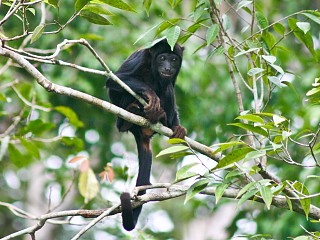Campo Grande is the main starting point for those who want to see the Southern Pantanal or Bonito. Nicknamed Cidade Morena, because of its chestnut-coloured earth, Campo Grande has in less than fifty years been transformed from an insignificant settlement into a buzzing metropolis with a population of 650,000 and an annual growth of 3%. Founded in 1889, the city was only made the capital of the new state of Mato Grosso do Sul in the late 1970s, since when it has almost doubled in size, though it retains a distinctly rural flavour: its downtown area manages to combine skyscraping banks and apartment buildings with ranchers general stores and poky little shops selling strange forest herbs and Catholic ex votos. Campo Grande is a relatively salubrious market centre for an enormous cattle-ranching region; it is also an important centre of South American trade routes from Paraguay, Bolivia, Argentina and the south of Brazil.
Facts about Campo Grande
- Campo Grande was the first city in Brazil to have sobarias, typical restaurants serving Japanese soba.
- In Prose Park (officially Indigenous Nations Park), researchers found the remains of pre-Columbian people. There is evidence throughout the region that point to the possibility that the region had been inhabited by prehistoric people.
- Until the arrival of the railroad, the mail came in Campo Grande through the river that connected Aquidauana and Rio de Janeiro. Mail pouches roamed the rest of the journey on horseback from Aquidauana to Campo Grande.
- Campo Grande is now one of the most significant communities of descendants of Japanese immigrants from the island of Okinawa. Cultural traditions have been preserved among the Japanese community in Campo Grande.













